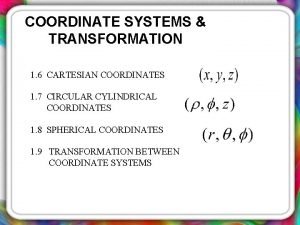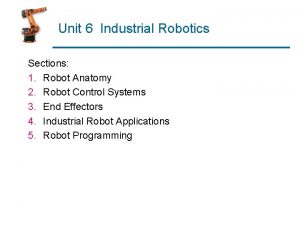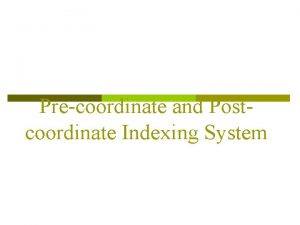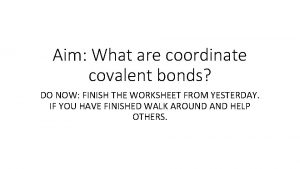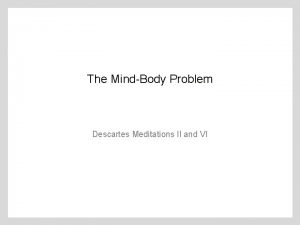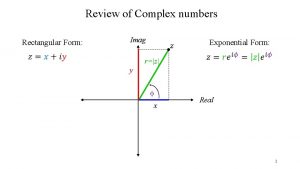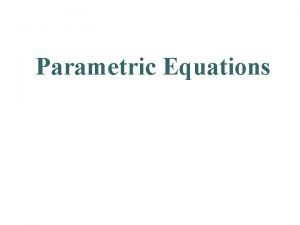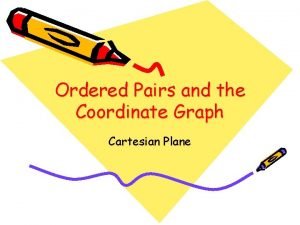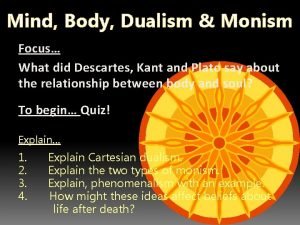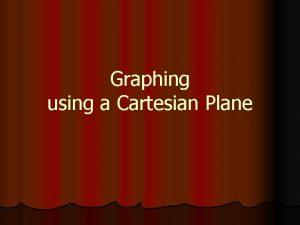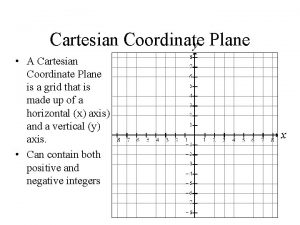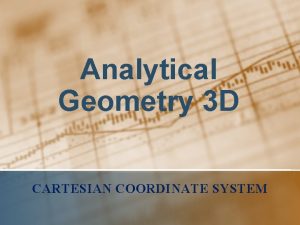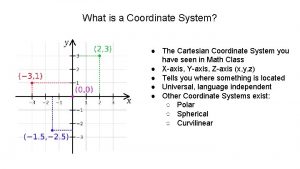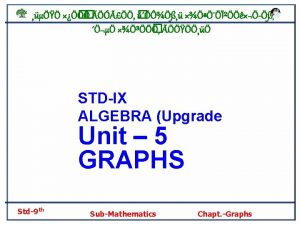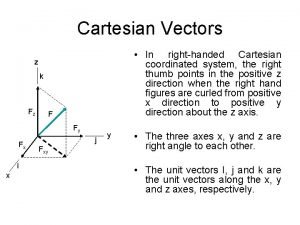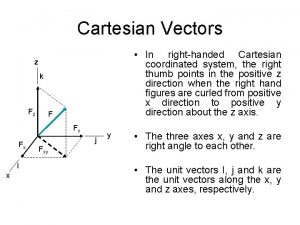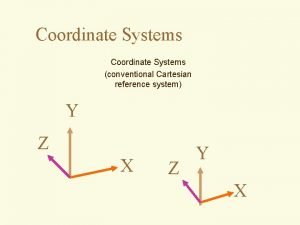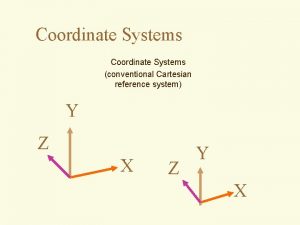PH 102 PHYSICS2 COORDINATE SYSTEMS Cartesian coordinate system












- Slides: 12

PH 102 - PHYSICS-2 COORDINATE SYSTEMS

Cartesian coordinate system Z P(X, Y, Z) Y X • dx, dy, dz are infinitesimal displacements along X, Y, Z. • Volume element is given by dv = dx dy dz • Area element is da = dx dy or dy dz or dxdz • Line element is dx or dy or dz • show that volume of a cube of edge a is a 3.

Spherically Symmetric problem (r, θ, φ) Z θ r Y φ X

Spherical polar coordinate system (r, θ, φ) Z θ φ • dr is infinitesimal displacement along r, r dθ is along θ and r P(r, θ, φ) sinθ dφ is along φ direction. • Volume element is given by dr dv = dr r dθ r sinθ dφ P r dθ • Limits of integration of r, θ, φ r are Y 0<r<∞ , 0<θ <π , o<φ <2π • Show that Volume of a sphere r sinθ dφ of radius R is 4/3 π R 3. X θ is zenith angle( starts from +Z reaches up to –Z) , φ is azimuth angle (starts from +X direction and lies in x-y plane only)

Volume of a sphere of radius ‘R’

Cylindrical coordinate system (r, φ, z) Z Z r φ X Y

Cylindrical Spherical polarcoordinatesystem (r, φ, z) Z dz r dφ dr φ r dr X φ is azimuth angle r dφ • dr is infinitesimal displacement along r, r dφ is along φ and dz is along z direction. • Volume element is given by dv = dr r dφ dz • Limits of integration of r, θ, φ Y are 0<r<∞ , 0<z <∞ , o<φ <2π • Show that Volume of a Cylinder of radius ‘R’ and height ‘H’ is π R 2 H.

Volume of a Cylinder of radius ‘R’ and Height ‘H’

Points to remember System Coordinates dl 1 dl 2 dl 3 Cartesian Spherical Cylindrical x, y, z r, θ, φ r, φ, z dx dr dr dy rdθ rdφ dz r sinθdφ dz • Volume element : dv = dl 1 dl 2 dl 3 • If Volume charge density ‘ρ’ depends only on ‘r’: • For Circular plate: Area element da=r dr dφ in both the coordinate systems (because θ=900)

Vector Analysis • What about A. B=? , Ax. B=? and AB=? • Scalar and Vector product: – A. B=ABcosθ Scalar or – (Axi+Ayj+Azk). (Bxi+Byj+Bzk)=Ax. Bx+Ay. By+Az. Bz – Ax. B=ABSinθ n Vector n (Result of cross product is always perpendicular(normal) to the plane of A and B B A

Gradient, Divergence and Curl • Gradient of a scalar function is a vector quantity. • Divergence of a vector is a scalar quantity. • Curl of a vector is a vector quantity. Vector

Fundamental theorem for divergence and curl • Gauss divergence theorem: • Stokes curl theorem
 Transformation between two cartesian coordinate systems
Transformation between two cartesian coordinate systems Joint notation scheme of body-and-arm assembly of scara is
Joint notation scheme of body-and-arm assembly of scara is Chain indexing examples
Chain indexing examples Coordinate bond in carbon monoxide
Coordinate bond in carbon monoxide Rationalism examples
Rationalism examples Descartes meditations 2
Descartes meditations 2 Exponential form to cartesian form
Exponential form to cartesian form X-axis
X-axis Cycloid equation cartesian
Cycloid equation cartesian Cartesian plane
Cartesian plane Dualism mind body problem
Dualism mind body problem Inbriver
Inbriver Cartesian plane named after
Cartesian plane named after
